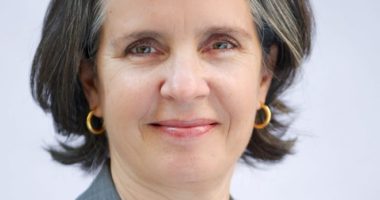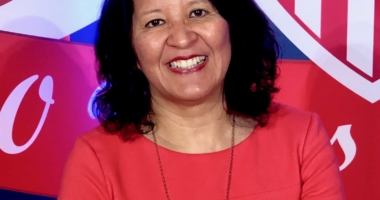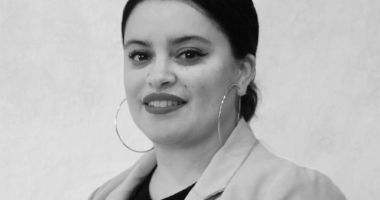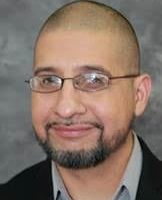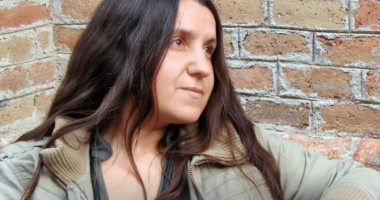Profiles in Education Equity: Daniel Zavala, Director of Policy and Government Relations at League of Education Voters
 A native of Washington state, Daniel Zavala started his career as a bilingual special education teacher after getting his bachelor’s and master’s from Stanford University. His path to policy work was shaped by his parents’ backgrounds in education and social justice. After earning his law degree at the University of Washington, he focused on education issues and working with education groups and the Washington State Attorney General’s Office in the Education Division. After law school, Daniel worked for StudentsFirst on state-level policy, served as the deputy director at TennesseeCAN, before returning to his hometown of Seattle to serve as the director of policy and government relations at League of Education Voters.
A native of Washington state, Daniel Zavala started his career as a bilingual special education teacher after getting his bachelor’s and master’s from Stanford University. His path to policy work was shaped by his parents’ backgrounds in education and social justice. After earning his law degree at the University of Washington, he focused on education issues and working with education groups and the Washington State Attorney General’s Office in the Education Division. After law school, Daniel worked for StudentsFirst on state-level policy, served as the deputy director at TennesseeCAN, before returning to his hometown of Seattle to serve as the director of policy and government relations at League of Education Voters.
Define how you advance education equity in Washington state.
I push to advance equity through one major lever: research-based community-driven information and credibility through research and information. In other words, I aim to be seen as an expert on the content matter.
I focus on credibility through research and information because when someone is persuaded with information they find to be credible, that belief becomes rock solid. When that information is grounded in community engagement and academic research, it can be the base for an entire movement that leads to community mobilization and influencing policy.
This method is also the purest way we can authentically involve communities that have historically and systemically been absent from the research, advocacy, and legislative process.
By the way, I use the combined term historically and systemically underserved because it is both individual actors and system structures that contribute to the invisibility and lack of access for many communities.
What (or who) motivates you to advocate for education equity?
I recently spent time with my extended family in rural eastern Washington (Othello, WA). For context, the school district there is 82 percent eligible for free or reduced lunch and nearly 90 percent Latino. The motivation I have comes from the invisibility of this community and so many more like it across my state and the country. My motivation comes from the historic and systemic lack of service and access to opportunities that lead to generational cycles of missed potentiality.
While we have the data to highlight the vast need in my family’s community and many like it, we do not have the supports and resources distributed in a way that meets that need. In a state that spends about 60 percent of the state budget on education, this is an unacceptable reality. While I paint a somewhat somber picture, I hold immense optimism to address the diverse needs of our state and students who have been invisible to our public education system. For them, I am motivated. For them, I advocate.
What do you think are the most pressing education equity issues right now? How can advocates address this challenge?
A statement from a 2016 White House report on the economic landscape is etched in my brain: Up to 47 percent of U.S. jobs are subject to machine automation over the next two decades. Nearly half of existing jobs! This will most impact low-paid workers with non-transferrable skills. Put differently, this will impact those who have historically and systemically been underserved by our public education system and actors. They are poor and Black and Brown children in urban and rural areas. They are students requiring special education services. They are first- and second-generation Americans with limited English proficiency. They are students with non-stable housing (foster, homeless, and migrant). Our most pressing challenge is not only getting our students to the proverbial finish line — be it graduation or postsecondary completion — but also getting them into meaningful pathways that will lead to transferrable job skills and living wages that will break the generational cycle of poverty that society has created over the last several centuries.
As advocates, we must ensure authentic engagement with the diverse communities across the state. We must prioritize the needs of students who have been invisible to a system. We must be explicit about whether targeted supports and resources will actually reach their intended purpose. We must measure progress along multiple measures of student success (e.g., social and mental well-being, discipline, access to rigorous programming … in addition to graduation rates and test scores). As advocates, we must stay fast in our unwavering belief that EVERY student has the potential to be successful in life and it is our moral and professional obligation to nurture that potential into success.
What’s your favorite quote? And why?
“¡Sí se puede!”
These words, uttered by Dolores Huerta, the co-founder of the United Farm Workers, ring as true today as they did in 1972 (and millennia before). They rang true when President Obama used a translated adaption of “Yes we can” in 2008. They embody the core values of my upbringing by parents dedicated to social justice and human rights. They represent my earliest memories marching to my state capital chanting among sistren and brethren equally empowered by a united front. These three simple words represent the collective power of a people, a movement, to dismantle social and political barriers. They inspire and give hope to those that are still oppressed. They give me a framework to look to the future, that we can do something to give better opportunity for the next generation. They elicit a sense of possibility.


